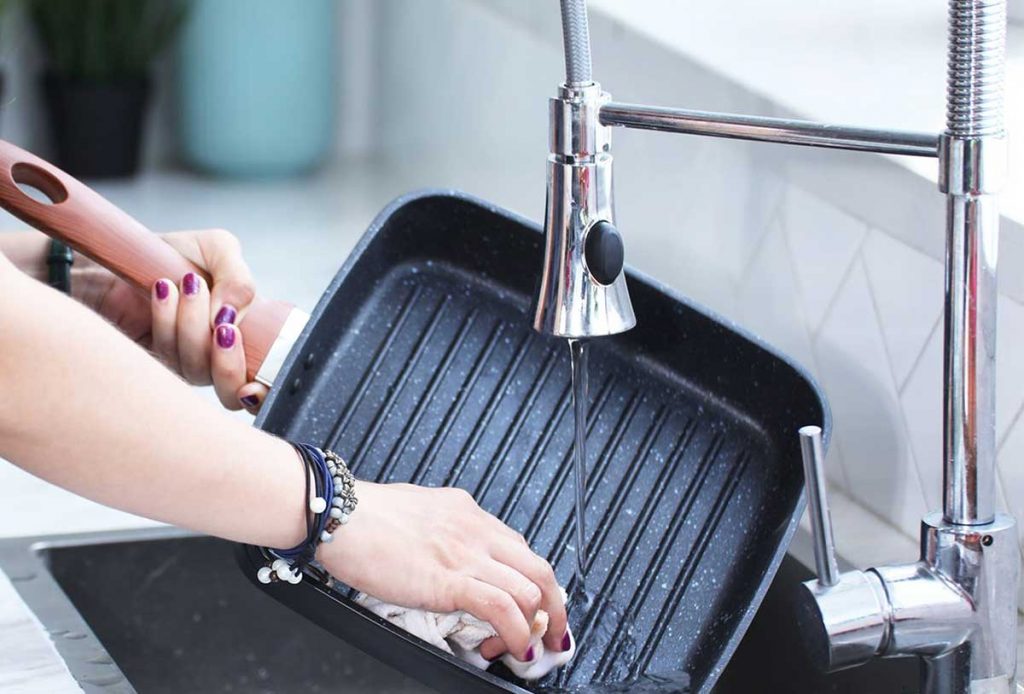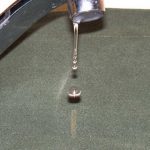The low hot water flow usually makes your dishwashing last longer and causes much discomfort in daily activities. So, you might ask, how to increase hot water pressure in kitchen sink? Today’s article will provide you with nice tips to solve this troublesome.
We will also explain the most popular reason for this issue and how to fix it. Now, let’s get started.
What Causes Low Water Pressure In The Kitchen Sink?
Pressure Regulator Valve
The broken pressure regulator valve is one of the main reasons. So, let’s first check the pressure regulator.
You can conduct a test by regulating the higher pressure to see if there are any increases in the flow. If the issue persists, the primary culprit comes from the valve.
Pipeline Issues
In addition, the pump leak is the most common cause of this issue. The leaky pipelines lead to a decrease in water distribution throughout the whole house. As a result, the more water outlets you have, the lower pressure is.
Blockage In The Faucet Aerator & Cartridge
The decrease in water pressure from the kitchen is easy to detect if the stream flows out from other taps are also slower. They all share the exact causes, like faulty pressure regulator valves or leaky pipes.
If the problem only comes from kitchen faucets, the significant issue could be the blockage in either its faucet aerator or cartridge.
The faucet aerator is the mesh screen, which stays at the end of the faucet spout and is made of plastic or metal. It infuses air into the water and controls the water flow rate.
Like the faucet aerator, the cartridge is the part inside the faucet that controls water flow. Over time, both get stuck by the hard water mineral deposits, sediment, debris, etc. It results in lower stream pressure for the kitchen faucet.
How To Increase Hot Water Pressure In Kitchen Sink?
Blockage In The Flow Restrictor
Once you realize the hot water volume flowing from the kitchen tap insistently, the clogged flow restrictor is a potential culprit for this issue. Getting rid of clogging is essential to solving the problem.
Now, let us show you the steps to clean the flow restrictor.
Step 1: Unscrew the flow restrictor
Before this first step, let’s turn off the main supply to your house by twisting the shutoff valve. Then, use the locking filter to remove all plastic parts from the flow restrictor.
Step 2: Look for the clog
The opening of the flow restrictor makes it easy to locate the problems. Typically, the build-up of hard mineral deposits debris prevents the proper stream volume from running out from the tap.
So, if you find any sign of limescale accumulating on the faucet pipe, they are the right culprit to lower the pressure.
See more: What Causes Low Hot Water Pressure Kitchen faucet only?
Step 3: Unclog the drainage
Thanks to the homemade cleaning solution, cleaning up the clog never becomes complicated. Let’s mix a cup of baking soda with a cup of vinegar to create an efficient solution to unclog sediments.
Next, pour the solution down the pipe and wait until the chemical reaction occurs. Finally, rinse the tube under hot water to completely dissolve the blockage.
Step 4: Screw the flow restrictor back
Afterward, screw the flow restrictor back and enjoy the higher water pressure pouring down in the kitchen sink!

A Clogged Water Line
You still can’t get the desired hot water power despite dissolving clogs in pipes. Well, cleaning the clogged water line would be a comprehensive solution.
This method is more complicated due to the necessity of removing all faucet part removal yet improving effectiveness. Here are the instructions to do that.
Step 1: Turn off the water
Turning off both hot and cold water valves is necessary to prepare for step 2 of faucet internal part removal. You can find both valves under the kitchen sink. The left valve is for cold water, and the right is hot water.
Step 2: Remove all internal faucet spout parts
It is essential to detach internal parts to take out almost debris from the main supply line altogether. The tight and narrow spout will make big waste hard come out from the line.
Step 3: Turn on the water
Moving to this step, you should prepare a bucket and then place it under the sink. After turning on the supply, the stronger flow without any restriction comes through the pipe. It pulls sediments out from the mainline quickly.
Step 4: Resemble the parts again.
Once the pressure reaches the proper level, you can turn off the water and then resemble all parts together. Last but not least, don’t misplace pieces as it can cause more trouble.
Read more: Low water pressure in one faucet
Conclusion
We hope you find the post on how to increase hot water pressure in the kitchen sink useful. It gives you a deeper understanding of the main reasons for lower pressure and adjustment methods.
These guidelines are easy to follow. You certainly can increase pressure quickly without the help of a plumber.
Let’s save this post and enjoy the completion of your well-done job!




